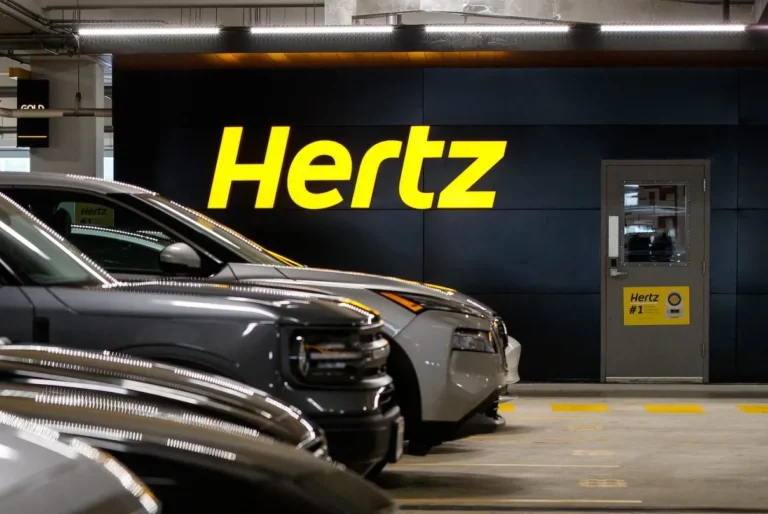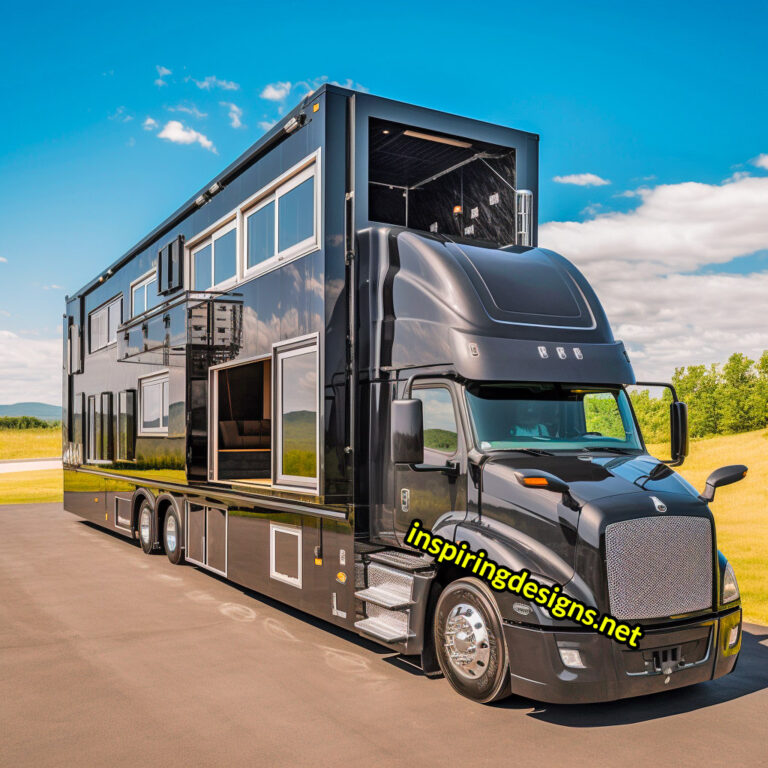Mattracks Prices: A Comprehensive Guide to Understanding Your Investment
Mattracks Prices: A Comprehensive Guide to Understanding Your Investment cars.truckstrend.com
In the realm of off-road capability and extreme terrain mobility, few names command as much respect and recognition as Mattracks. These innovative rubber track conversion systems transform ordinary wheeled vehicles – from ATVs and UTVs to heavy-duty trucks and agricultural equipment – into unstoppable machines, capable of traversing deep snow, thick mud, soft sand, and rugged landscapes with unparalleled ease. However, the superior performance and versatility that Mattracks offer come with a significant financial consideration: their price.
Understanding Mattracks prices is crucial for anyone contemplating this transformative investment. It’s not merely a matter of checking a single price tag; rather, it involves navigating a complex landscape of models, features, applications, and market dynamics. This comprehensive guide aims to demystify Mattracks pricing, providing potential buyers with the knowledge and insights needed to make an informed decision, optimize their budget, and unlock the full potential of their off-road adventures or professional operations.
Mattracks Prices: A Comprehensive Guide to Understanding Your Investment
What Are Mattracks? An Overview
Before delving into the specifics of pricing, it’s important to grasp what Mattracks are. Mattracks are complete, bolt-on rubber track conversion systems designed to replace a vehicle’s tires. Each system consists of four independent track units, which are engineered to attach directly to the vehicle’s existing wheel hubs. Unlike traditional tires, which concentrate the vehicle’s weight onto a small contact patch, Mattracks distribute the weight over a much larger area, significantly reducing ground pressure. This enhanced flotation prevents vehicles from sinking in soft conditions and provides superior traction on slippery or uneven surfaces.
The benefits of Mattracks are extensive:
- Unrivaled Traction: Maximizes grip on snow, ice, mud, sand, and loose terrain.
- Superior Flotation: Reduces ground pressure, allowing vehicles to float over soft surfaces without getting stuck.
- Enhanced Stability: A wider footprint improves stability on slopes and uneven ground.
- Year-Round Versatility: Transforms seasonal vehicles into multi-purpose, all-weather workhorses.
- Reduced Environmental Impact: Lower ground pressure minimizes damage to sensitive ecosystems.

Mattracks systems are engineered for durability and performance, featuring robust steel frames, high-strength rubber tracks, and advanced suspension systems that adapt to the terrain, providing a smoother ride than many might expect. They represent a serious upgrade, designed for those who demand the ultimate in off-road capability, whether for recreational exploration, essential utility work, or demanding commercial applications.
Factors Influencing Mattracks Prices
The price of a Mattracks system is not uniform; it varies significantly based on several key factors. Understanding these determinants is the first step in estimating your potential investment.
-
Vehicle Type and Size: This is arguably the most significant factor. Mattracks designs specific series for different vehicle classes:
- ATV/UTV: Generally the least expensive, as they are smaller, lighter, and designed for lighter loads.
- Light Trucks/SUVs: Require more robust and larger track systems, leading to a higher price point.
- Heavy-Duty Trucks (3/4-ton, 1-ton and up): Demand significantly heavier-duty tracks, axles, and suspension components, pushing prices substantially higher.
- Agricultural/Commercial/Industrial Equipment: These specialized, often custom-engineered systems are the most expensive, designed for immense loads and continuous heavy use.
-
Mattracks Series/Model: Mattracks offers various series within each vehicle category, each designed for specific weight capacities, applications, and performance levels. For instance, within the UTV segment, a LiteFoot series might be suitable for recreational use in light snow, while an XT or M3 series offers more aggressive traction and durability for deeper snow, mud, or commercial tasks. Higher capacity and more advanced series naturally command higher prices.
-
Application and Intended Use: Are you buying Mattracks for occasional recreational use, or for daily commercial operations in challenging conditions? Commercial-grade systems are built to withstand more abuse, often feature reinforced components, and are designed for longer lifespans under strenuous conditions, which translates to a higher cost.
-
Material and Construction Quality: Mattracks are built with high-quality materials, but specific models might incorporate advanced rubber compounds for enhanced durability, specialized steel alloys for strength, or unique internal designs to improve performance and longevity. These premium materials and construction techniques contribute to the overall price.
-
Features and Technology: Some Mattracks systems include advanced features like self-cleaning designs, integrated suspension systems for improved ride comfort, anti-vibration technology, or specialized adapters for unique vehicle configurations. These innovations add to the cost.
-
New vs. Used Condition: As with any significant purchase, buying new offers a full warranty and the latest technology, but at the highest price. Used Mattracks can offer substantial savings, but come with risks regarding wear, history, and remaining lifespan.
-
Dealer and Location: Prices can vary slightly between authorized dealers due to regional market conditions, shipping costs, and individual dealer pricing strategies.
-
Installation and Accessories: While often a separate cost, the complexity of installation (DIY vs. professional) and the need for additional accessories (e.g., anti-rotation kits, specific gearing, specialized adapters) can impact the total investment.
Mattracks Models and Their Estimated Price Ranges
It’s important to note that Mattracks does not publicly list exact prices, as they can fluctuate and are often quoted by authorized dealers based on specific vehicle fitment and current market conditions. The prices provided below are estimated ranges based on general market observations and discussions with dealers. They serve as a guide and should not be considered definitive quotes. Always obtain a direct quote from an authorized Mattracks dealer for the most accurate pricing.
Estimated Mattracks Price Table
| Mattracks Series | Vehicle Type | Estimated New Price Range (USD) | Estimated Used Price Range (USD) | Key Application/Notes |
|---|---|---|---|---|
| ATV/UTV Series | ||||
| LiteFoot | Smaller/Mid-Size ATVs/UTVs | $4,000 – $8,000 | $2,000 – $5,000 | Entry-level, recreational, light utility, snow, sand, mud. Ideal for those prioritizing budget. |
| XT | Standard ATVs/UTVs (e.g., Polaris RZR, Can-Am Defender) | $6,000 – $10,000 | $3,000 – $7,000 | All-terrain, general utility, deeper snow, tougher conditions. Most popular ATV/UTV series. |
| M3 / M3-Lite | Newer, High-Performance UTVs | $8,000 – $12,000+ | $4,000 – $8,000 | Enhanced performance, improved ride, often UTV-specific design for modern vehicles. |
| Truck/SUV Series | ||||
| 400 Series | Lighter Trucks, SUVs (e.g., Jeep Wrangler, smaller pickups) | $15,000 – $25,000 | $7,000 – $15,000 | Recreational, light commercial, search & rescue, accessible trails. |
| 600 Series | Half-Ton Trucks (e.g., Ford F-150, Chevy Silverado 1500) | $20,000 – $35,000 | $10,000 – $20,000 | Medium-duty commercial, heavy recreational, utility access. |
| 800 Series | 3/4 – 1 Ton Trucks (e.g., Ford F-250/350, Ram 2500/3500) | $30,000 – $50,000 | $15,000 – $30,000 | Serious commercial, industrial, forestry, severe terrain operations. |
| Agricultural/Commercial/Industrial Series | ||||
| 1500, 2000, 4000, etc. | Tractors, Harvesters, Large Industrial Equipment, Specialty Vehicles | $50,000 – $150,000+ | $25,000 – $100,000+ | Highly specialized systems for heavy agricultural, forestry, utility, military, and custom applications. Prices vary widely based on customization. |
Disclaimer: All prices are estimated ranges and can vary significantly based on dealer, location, specific model configuration, market conditions, and the condition of used units. Always request a direct quote from an authorized Mattracks dealer for the most accurate pricing.
New vs. Used Mattracks: A Cost-Benefit Analysis
The decision between purchasing new or used Mattracks is a pivotal one, with significant implications for your budget and long-term satisfaction.
New Mattracks
Pros:
- Full Manufacturer’s Warranty: Provides peace of mind against defects and premature wear.
- Latest Technology: Benefit from the newest designs, materials, and performance enhancements.
- Perfect Condition: No hidden wear or damage, ensuring optimal performance from day one.
- Dealer Support: Access to expert advice, professional installation, and dedicated customer service.
- Financing Options: Dealers often have partnerships with lenders, making financing more accessible.
Cons:
- Highest Upfront Cost: The most expensive option.
- Depreciation: Like vehicles, Mattracks begin to depreciate once purchased.
Used Mattracks
Pros:
- Significant Cost Savings: Often 30% to 70% less than new, making them more accessible.
- Immediate Availability: Can sometimes be acquired faster than new units, especially if custom orders are involved.
- Depreciation Already Occurred: The initial steep depreciation has already taken place.
Cons:
- No or Limited Warranty: Most used sales are "as-is," leaving you responsible for future repairs.
- Unknown History: Difficult to ascertain the true extent of prior use, maintenance, or potential abuse.
- Wear and Tear: Components like tracks, bogie wheels, and bearings will have varying degrees of wear, potentially requiring replacement sooner.
- Older Technology: May lack the advancements found in newer models.
- Compatibility Challenges: Finding the exact series and adapter kit for your specific vehicle can be more difficult.
Tips for Buying Used:
- Thorough Inspection: Examine the rubber tracks for cuts, tears, or excessive wear on the lugs and internal cords. Check all moving parts (bogie wheels, idlers, bearings) for play or damage.
- Request Maintenance Records: If available, these can provide insight into the unit’s history.
- Verify Fitment: Ensure the specific Mattracks model and its adapter kit are compatible with your vehicle’s make, model, and year.
- Consider Professional Inspection: If possible, have a qualified mechanic or Mattracks dealer inspect the used system before purchase.
Beyond the Purchase Price: Installation and Maintenance Costs
The initial purchase price is just one part of the total cost of ownership. Factor in these additional expenses:
-
Installation:
- DIY: If you are mechanically inclined and have the necessary tools (including a floor jack and stands capable of lifting your vehicle), you can save on labor costs. Mattracks are designed to be bolt-on, but the process can be labor-intensive and requires precision.
- Professional Installation: Authorized Mattracks dealers or specialized shops can install the system. Costs typically range from $500 to $2,000+, depending on the vehicle type and complexity. Professional installation ensures proper fitment and performance.
-
Maintenance:
- Routine Checks: Regular inspection of track tension, idler bearings, bogie wheels, and the anti-rotation device is crucial.
- Replacement Parts: Over time, components will wear out. The rubber tracks themselves are the most significant wear item, and their replacement cost can be substantial (ranging from hundreds to several thousands of dollars per track, depending on the series). Bearings, wheels, and other hardware will also need periodic replacement.
- Storage: Proper storage during off-season (e.g., on blocks to relieve pressure, out of direct sunlight) can extend the life of the tracks and components.
Financing Your Mattracks Purchase
Given the significant investment, many buyers explore financing options:
- Dealer Financing: Authorized Mattracks dealers often have relationships with lenders who specialize in equipment financing, similar to vehicle loans.
- Bank or Credit Union Loans: Personal loans, equipment loans, or lines of credit can be utilized. Commercial buyers may qualify for business loans.
- Leasing: For businesses, leasing can be an attractive option, offering lower monthly payments and potential tax advantages. Consult with a financial advisor to determine if leasing is suitable for your situation.
When considering financing, always evaluate the total cost, including interest, over the loan term.
Tips for Getting the Best Mattracks Price
Securing the best possible price for your Mattracks involves strategic planning and negotiation:
- Shop Around: Obtain quotes from multiple authorized Mattracks dealers. Prices can vary, and a competitive quote from one dealer can be leverage with another.
- Define Your Needs Precisely: Avoid overbuying. If a lighter-duty series (e.g., LiteFoot) meets your requirements, don’t pay for the heavier-duty XT series. Be clear about your vehicle, intended use, and terrain.
- Consider Off-Season Purchases: Demand for Mattracks might fluctuate seasonally. For instance, buying snow tracks in the summer might yield better deals.
- Negotiate: Don’t hesitate to negotiate the price. Ask about any current promotions, discounts, or bundled services (e.g., free or discounted installation).
- Look for Package Deals: Sometimes dealers offer packages that include the tracks, installation, and perhaps a basic maintenance kit at a slightly reduced overall price.
- Factor in Resale Value: Mattracks, especially well-maintained ones, tend to hold their value reasonably well. This can be a factor if you anticipate upgrading in the future.
- Inquire About Used Trade-ins: If you have an older set of Mattracks or other equipment, some dealers might offer a trade-in value.
Potential Challenges and Solutions
While Mattracks offer incredible benefits, there are a few considerations:
- High Upfront Cost:
- Solution: Explore financing options, consider buying a well-inspected used set, or evaluate the long-term return on investment (ROI) if for commercial use.
- Compatibility Issues:
- Solution: Always verify exact vehicle fitment with an authorized dealer using your vehicle’s specific make, model, and year. Mattracks are vehicle-specific.
- Maintenance Complexity:
- Solution: Adhere strictly to the manufacturer’s maintenance schedule. If uncomfortable with DIY, budget for professional servicing. Keep common wear parts on hand if you operate in remote areas.
- Reduced Top Speed and Fuel Economy: Mattracks are designed for traction and flotation, not speed. They significantly reduce a vehicle’s top speed and can increase fuel consumption due to increased rolling resistance and weight.
- Solution: Understand these trade-offs and adjust your expectations and driving habits accordingly. Plan routes to minimize long-distance, high-speed travel on pavement.
- Shipping Costs: Mattracks are heavy and bulky.
- Solution: Factor shipping costs into your budget. Inquire if dealers offer competitive freight rates or if local pickup is an option.
Concluding Summary
Investing in Mattracks is a decision that can profoundly enhance your vehicle’s capabilities, opening up new possibilities for exploration, work, and recreation in challenging environments. While the price can be a significant hurdle, understanding the various factors that influence it – from vehicle type and track series to new vs. used conditions and ongoing maintenance – empowers you to make an informed and strategic purchase.
By meticulously researching models, comparing quotes from authorized dealers, considering the pros and cons of new versus used systems, and factoring in all associated costs, you can navigate the market effectively. The right set of Mattracks, properly selected and maintained, is not just an expense; it’s an investment in unparalleled access, productivity, and adventure, proving its worth countless times over in terrains where traditional wheels simply cannot tread.








